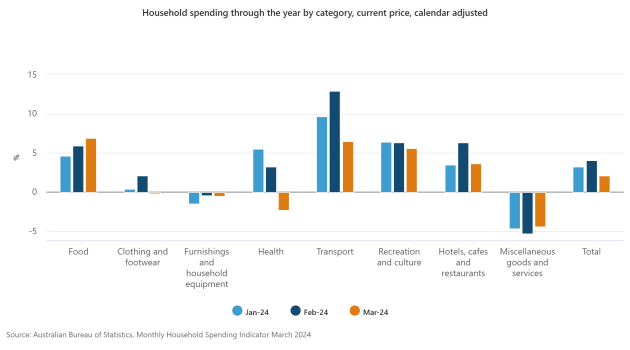Household spending was 2.1 per cent higher than a year ago in March 2024 but has slowed since the beginning of the year, according to new figures from the Australian Bureau of Statistics (ABS).
ABS head of business statistics Robert Ewing said household spending growth was lower in March compared to the annual growth of 3.2 per cent in January and 4.0 per cent in February.
“Cost of living pressures continue with households focusing on non-discretionary spending, while discretionary spending growth has stalled,” Ewing said.
Growth in spending on services slowed to 1.8 per cent in March, which is the lowest growth rate for this category since February 2021.
Transport contributed to the lower growth rate for services spending, with an annual rise of 6.5 per cent in March, compared to 12.9 per cent in February.
Meanwhile, clothing fell into negative growth, at 0.2 per cent, following a 2.1 per cent lift in February. Clothing joined furnishings, health and miscellaneous goods and services in the negative growth.
The earlier timing of Easter, which mostly landed in March this year, but which entirely took place in April in 2023, also impacted the results according to ABS.
“Households spent more on goods like food in the lead up to Easter and less on services like health over the long weekend,” Ewing said.
Compared to the same time last year, household spending rose in all states and territories. The spending growth rates were lower than in February though in all states and territories.
The largest rises in spending were seen in South Australia, up 5.7 per cent, and Western Australia, up 4.4 per cent. The Northern Territory had the smallest annual growth of 0.3 per cent in March.




